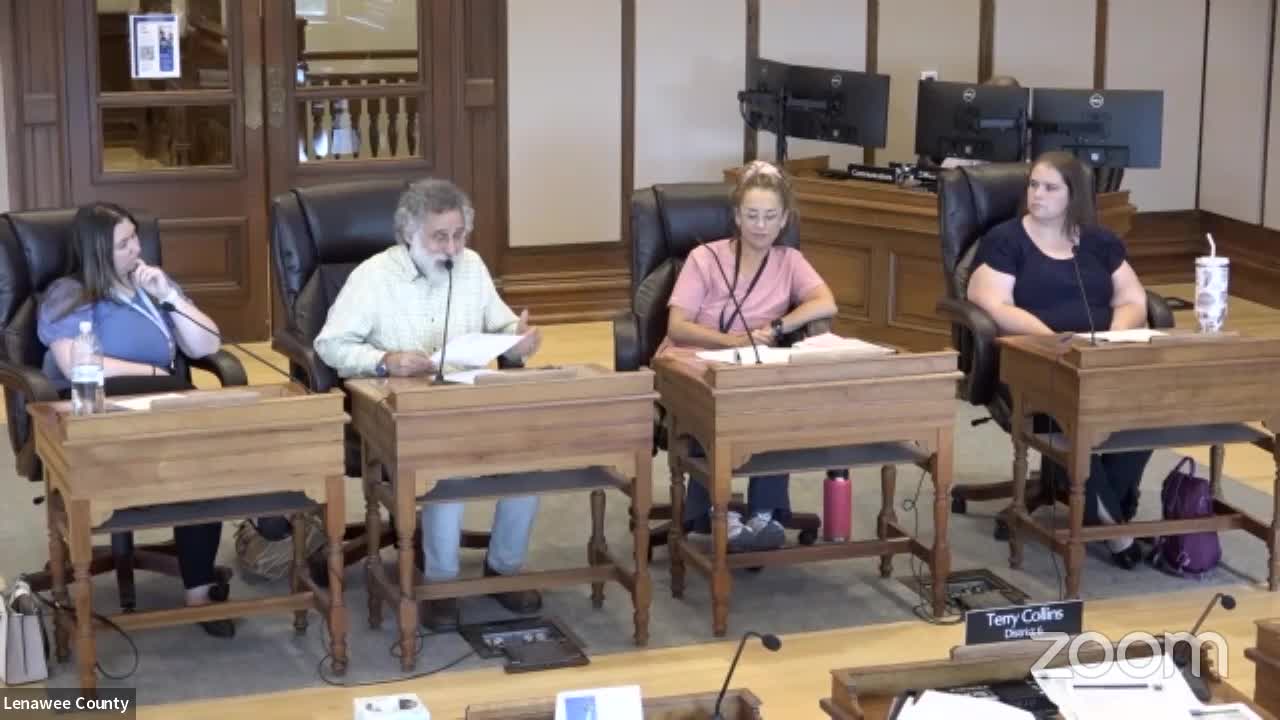Experts warn of rapid virus mutations outpacing vaccines
July 17, 2024 | Lenawee County, Michigan

This article was created by AI summarizing key points discussed. AI makes mistakes, so for full details and context, please refer to the video of the full meeting. Please report any errors so we can fix them. Report an error »

During a recent government meeting, officials discussed pressing public health concerns, including the ongoing development of vaccines for influenza and COVID-19, as well as the rising issue of firearm regulation.
One key topic was the progress on an H5N1 influenza vaccine, with officials noting that development is still underway. Additionally, there are efforts to create a combined vaccine that would address both regular influenza and COVID-19 using mRNA technology. This approach aims to streamline vaccinations into a single shot, although the timeline for its availability remains uncertain.
The meeting also highlighted the importance of public health measures in response to avian influenza, with officials advising against handling dead birds and emphasizing the need for pasteurized milk to prevent transmission. Approximately 100 laboratories are currently engaged in identifying bird flu cases, with wastewater testing being utilized as a detection method.
Concerns were raised about the rapid mutation of viruses, which could outpace vaccine development. Despite this, officials reassured that current vaccines still provide substantial coverage against existing strains, although there is apprehension about potential significant genetic shifts in the virus.
The discussion shifted to firearm regulation, with a retired police chief emphasizing the need for stricter penalties for firearm dealers who convert semi-automatic weapons into fully automatic ones. The chief pointed out that current punishments are insufficient and called for more severe consequences to deter such practices.
The meeting concluded with reflections on the historical context of gun violence in the U.S., comparing current statistics to those from the late 1960s. Participants acknowledged the complexity of addressing gun control in a country with a deeply rooted gun culture, suggesting that public health framing of the issue could lead to more effective solutions. The conversation underscored the necessity for community awareness and mental health initiatives as part of a broader strategy to tackle these intertwined public health challenges.
One key topic was the progress on an H5N1 influenza vaccine, with officials noting that development is still underway. Additionally, there are efforts to create a combined vaccine that would address both regular influenza and COVID-19 using mRNA technology. This approach aims to streamline vaccinations into a single shot, although the timeline for its availability remains uncertain.
The meeting also highlighted the importance of public health measures in response to avian influenza, with officials advising against handling dead birds and emphasizing the need for pasteurized milk to prevent transmission. Approximately 100 laboratories are currently engaged in identifying bird flu cases, with wastewater testing being utilized as a detection method.
Concerns were raised about the rapid mutation of viruses, which could outpace vaccine development. Despite this, officials reassured that current vaccines still provide substantial coverage against existing strains, although there is apprehension about potential significant genetic shifts in the virus.
The discussion shifted to firearm regulation, with a retired police chief emphasizing the need for stricter penalties for firearm dealers who convert semi-automatic weapons into fully automatic ones. The chief pointed out that current punishments are insufficient and called for more severe consequences to deter such practices.
The meeting concluded with reflections on the historical context of gun violence in the U.S., comparing current statistics to those from the late 1960s. Participants acknowledged the complexity of addressing gun control in a country with a deeply rooted gun culture, suggesting that public health framing of the issue could lead to more effective solutions. The conversation underscored the necessity for community awareness and mental health initiatives as part of a broader strategy to tackle these intertwined public health challenges.
View full meeting
This article is based on a recent meeting—watch the full video and explore the complete transcript for deeper insights into the discussion.
View full meeting
